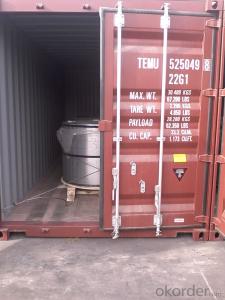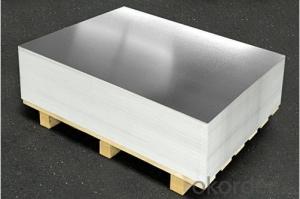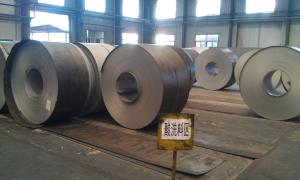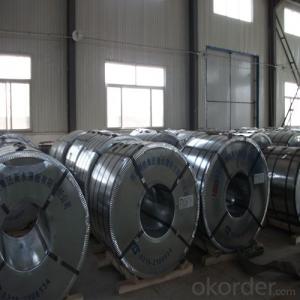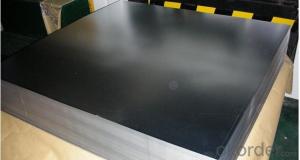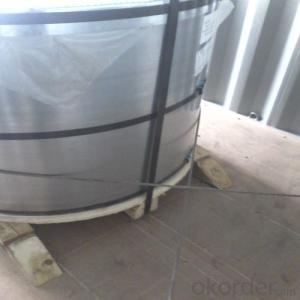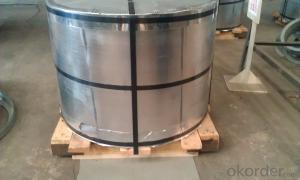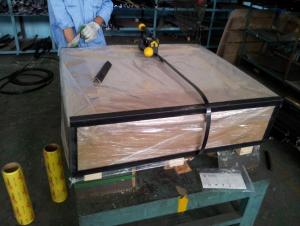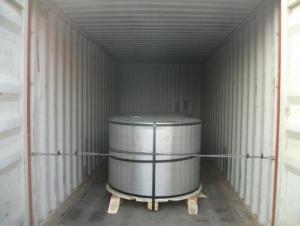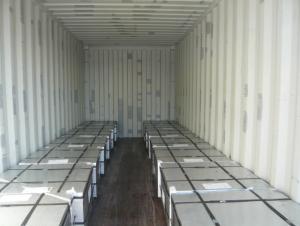Electrolytic Tinplate of Metal Package Useage
- Loading Port:
- Qingdao
- Payment Terms:
- TT OR LC
- Min Order Qty:
- 25 m.t.
- Supply Capability:
- 30000 m.t./month
OKorder Service Pledge
OKorder Financial Service
You Might Also Like
1.Structure of Electrolytic Tinplate of Metal Package Useage Description
Electrolytic Tinplate is a thin steel sheet coated by tin. It has an extremely beautiful metallic luster as well as excellent properties in corrosion resistance, solder ability, and weld ability.
2.Main Features of the Electrolytic Tinplate of Metal Package Useage
Electrolytic Tinplate undoubtedly enjoys the pride of place as a packaging medium especially for food. It owes its unique position to its "nine layer sandwich structure", each of which contributes to its eminence as a packing material. The steel base of electrolytic tinplate provides the necessary strength and formability for can fabrication. The tin-iron alloy layer provides the bond between the steel and free tin layer. The free tin layer is not only responsible for the attractive bright finish and ease of solderability but is also non-toxic- a factor of vital importance in food packaging!
Tinplate is also widely used for making all types of containers such as food cans, beverage cans, and artistic cans, tea cans, painting cans, chemical package cans and dry food package cans, metal printing etc. Its applications are not limited to containers; recently, electrolytic tinplate has also been used for making electrical machinery parts and many other products.
3.Electrolytic Tinplate of Metal Package Useage Images
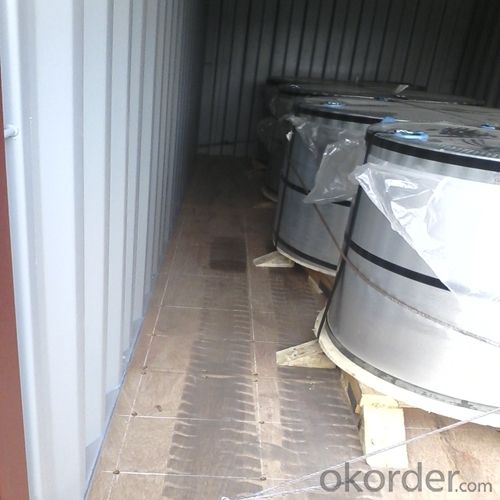
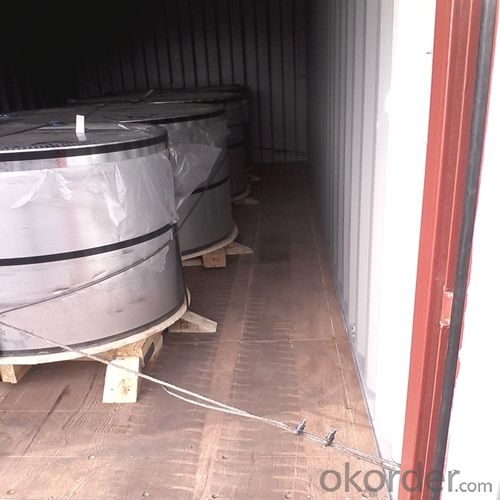
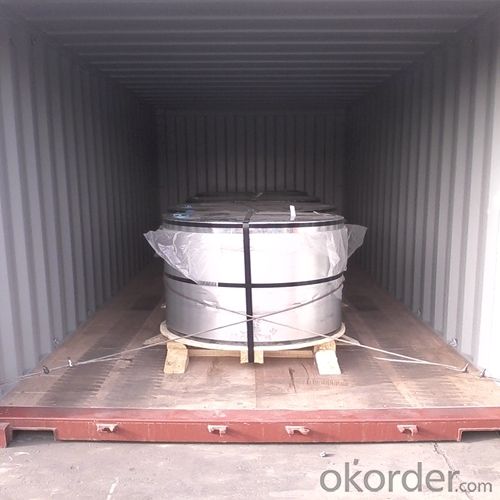
4.Electrolytic Tinplate of Metal Package Useage Specification
Standard: ISO 11949 -1995
Material: MR
Thickness:0.175mm
Width: 600mm
Temper: T4
Annealing:CA
Coil Inner Diameter: 508mm
Weight: 6-10 tons/coil 1~1.7 tons/sheets bundle
Passivation:311
Oil: DOS
Surface: Finish
5.FAQ of Electrolytic Tinplate of Metal Package Useage
1. What is the delivery time for your prime quality tinplate?
Usually 35 days after order confirmation.
2. What is your Minimum Order Quantity?
Usually MOQ is 50tons for one single size, for trial order, it can be 25 tons.
3. What is the payment term?
The most common we use is L/C at sight or TT. We can also try use other terms.
- Q: How does tinplate perform in microwave ovens?
- Tinplate should not be used in microwave ovens as it is a metal, and metals can cause sparks or damage to the appliance.
- Q: What are the advantages of using tinplate for paint cans?
- There are several advantages of using tinplate for paint cans. Firstly, tinplate is a highly durable material that provides excellent protection against corrosion and external elements, ensuring the longevity of the paint stored inside. Additionally, tinplate has a high resistance to impact, making it less likely to dent or get damaged during transportation or storage. Furthermore, tinplate has superior barrier properties, preventing the paint from interacting with oxygen or moisture, which could potentially affect its quality. Lastly, tinplate is a sustainable and recyclable material, making it an environmentally friendly choice for paint can packaging.
- Q: How to test the tightness of tin metal cans?
- The empty tank which has been cleaned can be dried by 35, and the pressure or pressure leak test shall be carried out according to the equipment condition of each unit. B.1 pressure leak test, the empty tank will be carefully injected into the water until eight or nine into full, the rubber ring will be placed in the appropriate plexiglass plate at the opening side of the roll, so that it can be sealed. Start the vacuum pump, turn off the bleeder valve, hold down the cover by hand, control the pumping, and make the vacuum gauge rise from 0Pa to 6.8X10 PA (510mmHg) for more than 1min, and keep the vacuum above 1min.
- Q: What are the advantages of tin packaging?
- The decoration is exquisite: the metal material has good printing performance; the design trademark is bright and beautiful; the packaging container made by it is noticeable, and it is a kind of good sale packing.
- Q: What are the different types of tinplate seams?
- There are three main types of tinplate seams: the lap seam, the double seam, and the triple seam. The lap seam is formed by overlapping the tinplate and soldering the edges together. The double seam involves folding the edges of the tinplate over each other and then crimping them together. Lastly, the triple seam is created by folding the edges of the tinplate over each other twice and crimping them together.
- Q: What are the main growth drivers for the tinplate industry?
- The main growth drivers for the tinplate industry include increasing demand from the packaging sector, particularly for food and beverages, as tinplate offers excellent preservation properties. Additionally, the growing popularity of eco-friendly packaging solutions and the rise in disposable income in emerging economies are contributing to the industry's expansion. Furthermore, advancements in manufacturing technologies and the development of innovative tinplate products are driving the growth of the industry.
- Q: Can tinplate be used for packaging of flammable liquids?
- Yes, tinplate can be used for packaging of flammable liquids. Tinplate is a durable and corrosion-resistant material that provides a strong barrier against external elements, including flammable liquids. It is commonly used in the packaging of various products, including flammable liquids, due to its ability to withstand the potential hazards associated with these substances.
- Q: How does tinplate affect the overall cost of packaging?
- Tinplate can have a significant impact on the overall cost of packaging. While tinplate is known for its durability and ability to protect products, it is often more expensive than other packaging materials such as plastic or cardboard. The cost of tinplate includes not only the material itself but also the manufacturing process, transportation, and any additional coatings or finishes. Therefore, the decision to use tinplate for packaging should be carefully considered, weighing its benefits against its higher cost.
- Q: What are the main challenges in the production of tinplate?
- The main challenges in the production of tinplate include ensuring consistent quality and thickness of the tin coating, preventing corrosion and rusting of the base metal, maintaining a smooth and defect-free surface, managing the tinplate's strength and ductility properties, and minimizing the environmental impact of the tin coating process. Additionally, sourcing sustainable and ethically-mined tin can be a challenge in some cases.
- Q: What are the different ways to recycle tinplate closures?
- There are several different ways to recycle tinplate closures. One way is to separate the tinplate from other materials, such as plastic or glass, and then melt it down to create new tinplate products. Another method is to crush the closures into small pieces and use them as aggregate in construction materials like concrete. Tinplate closures can also be reprocessed and used in the production of new closures or other metal products. Additionally, recycling facilities may accept tinplate closures and send them to specialized recycling centers for further processing.
Send your message to us
Electrolytic Tinplate of Metal Package Useage
- Loading Port:
- Qingdao
- Payment Terms:
- TT OR LC
- Min Order Qty:
- 25 m.t.
- Supply Capability:
- 30000 m.t./month
OKorder Service Pledge
OKorder Financial Service
Similar products
Hot products
Hot Searches
Related keywords
